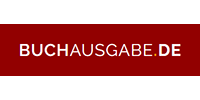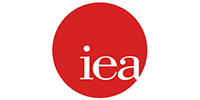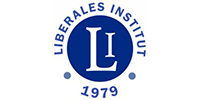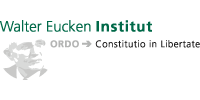Forward to the Past? Hayek, Free Banking, and the Cryptocurrency Revolution
Introduction
Back in the mid-1970s Friedrich Hayek dared to suggest that, if given a chance, private firms would produce better monies than governments ever have. His sensational claim encouraged others to look into past private currency arrangements, and especially into former “free banking” systems in which currency mainly consisted of redeemable paper notes issued by competing commercial banks.
The possibility of private fiat-like money that Hayek envisioned was entirely hypothetical when he raised it. As for free banking systems, by then, they had almost all long since given way to government paper currency monopolies, with little prospect that any ordinary commercial bank would dare to enter the paper currency business again. Consequently, no actual examples of either sort of private currency existed for economists to study. Knowledge of them was either entirely theoretical or based on episodes in the long past.
The advent of cryptocurrency has changed this. In important respects, “free-floating” cryptocurrencies, like Bitcoin, resemble Hayek’s private fiat-like currencies. Redeemable stablecoins, on the other hand, resemble old-fashioned, redeemable banknotes in being circulating, bearer claims to some other sort of money. Consequently, instead of having to rely on theory alone or on evidence from the distant past, to understand the merits and drawbacks of private currencies, economists can now learn from some living examples.
In this essay, I first review Hayek’s proposals and the research on free banking they helped to inspire. I then consider the advent and record of cryptocurrencies, asking, among other questions, how closely they resemble either the private fiat-like currencies envisioned by Hayek or old-fashioned commercial banknotes, whether they appear likely to displace official currencies, and what their record suggests about their merits compared to those monies.
Hayek’s Bold Proposals
It has been almost half a century since Austrian economist Friedrich Hayek offered a radical proposal for monetary reform that was to inspire a minor revolution in the field of monetary economics. In 1976, as inflation rates throughout the industrialized world rose to double-digit levels, Hayek published his brief pamphlet, Choice in Currency: A Way to Stop Inflation, declaring in it that.
There is less ground than ever for hoping that, so long as the people have no choice but to use the money their government provides, governments will become more trustworthy (Hayek 1976, 16).
The monopolization of money by governments, Hayek went on to observe, has its origin not in any benefit it secures for the people but solely in the desire to enhance the coercive powers of government. I doubt whether it has ever done any good except to the rulers and their favorites. All history contradicts the belief that governments have given us safer money than we would have had without their claiming an exclusive right to issue it (ibid).
Hayek then expressed his desire to see the governments of the Atlantic community bind themselves mutually not to place any restrictions on the free use within their territories of one another’s – or any other – currencies, including their purchase and sale at any price the parties decide upon, or on their use as accounting units in which to keep books (ibid., 17; my emphasis).
Although he realized that many would consider his proposal “absurd,” Hayek nevertheless hoped that it would “not be too long before complete freedom to deal in any money one likes will be regarded as the essential mark of a free country” (ibid., 22). Finally, Hayek hinted at – without actually endorsing – the possibility of an entirely market-based monetary system with the concluding observation that the best the state can do with respect to money is to provide a framework of legal rules within which the people can develop the monetary institutions that best suit them. (…) And private enterprise would probably have done better than the best [governments] have ever done (ibid.).
What Hayek merely hinted at in his 1976 pamphlet became the heart of a still more radical set of proposals published two years later as Denationalisation of Money: The Argument Refined. Here Hayek envisioned numerous private “banks,” all issuing their own currencies, bearing distinct and copyrighted names and units, and “vying for the use of their issue by the public by making them as convenient as possible” (Hayek 1978). Hayek thus imagined not only that the public might be allowed to choose freely among established, official monies, gold, and other former money commodities, each competing against the rest on a level world playing field, but that private “fiat like” paper currencies might also enter the fray. The result would be the gradual weeding-out of all but the most reliable currencies—which Hayek took to mean those with the most stable purchasing power.
And – this is where the real radicalism of Hayek’s later scheme comes in – Hayek did not think it at all likely that official monies would be among the survivors of such competition, because governments would lack the will to restrain their quantities as needed to keep them from depreciating (ibid., 44).
Private Fiat-Type Monies?
Assuming for now, as Hayek did, that monies of stable purchasing power are better than other sorts, and that consumers will therefore favor such monies over others, does it follow that competition will allow only those money issuers who supply what consumers want to make a profit? Hayek takes for granted that it does. But several studies suggest otherwise. They argue instead that, once a fiat-type currency’s stable purchasing power succeeds in gaining a substantial demand for it, its issuer might find that the profit from a sudden, once-and-for-all resort to hyperinflation exceeds the discounted profit to be had by maintaining its reputation so as to stay in business. As Lawrence White and I put some time ago in, a survey of research on free-market monetary systems,
A private issuer’s non-enforceable pledge to hold the purchasing power of its money constant, as envisioned by Hayek, might be ‘time-inconsistent’ …. If money-holders had perfect foresight, cheating by a fiat-type issuer would, of course, be impossible. [However, u]nder imperfect foresight, or if precommitment is impossible, private fiat-type money would not be viable; that is, it would hyperinflate and have zero value in equilibrium.
The problem here is really just a more extreme version of the “time inconsistency” problem widely considered to be one reason why central bankers are often tempted to inflate. In their case, the temptation arises, not because of one-time profits to be had (for central bankers’ earnings generally don’t depend on how much money they issue) but because the less the public expects them to inflate, the more they can temporarily boost output and unemployment by switching to a higher inflation rate.
In both its central banking and it’s competing (fiat) currencies contexts, the time inconsistency problem is fundamentally a “credible commitment” problem: when the management of fiat-type money is left entirely to the issuers’ discretion, that is, to his or her period-by-period calculations of an optimal strategy, there’s nothing to stop the issuer from reneging on a commitment to stick to a policy, however successful or popular it has been in the past, that’s no longer optimal from the issuers point-of-view. Therefore, commitment isn’t “credible.”
Commodity monies don’t pose a credible commitment problem, because their scarcity is built-in or “inherent,” depending as it does on the commodities’ cost of production, over which its producers have relatively little control. Because in equilibrium the value of a unit of commodity money is equal to its production costs, producers cannot profit by expanding their supply, for doing so only tends to raise those production costs further. The problem, of course, is that the inherent scarcity of a commodity money is itself no guarantee that it will have stable purchasing power.
Although various proposals have been made for making commitments made by fiat-type money issuers credible, such as by having contracts that punish reneging producers, so far these are hypothetical possibilities only. However, as we shall see, thanks to cryptocurrency, it is now possible to have an “artificial” currency whose supply is neither left to “the blind forces of nature” nor subject to anyone’s discretionary manipulation. In this respect at least, cryptocurrency is more capable of fulfilling Hayek’s vision than anything could have when Hayek first presented it, or for several decades afterwards.
The New Free Banking School
It was, perhaps, only natural that, besides helping to inspire other theoretical writings on currency competition, and particularly on the possibility of private fiat-type monies, Hayek’s radical proposals should have inspired inquiries into various private currency arrangements of the past. Had money ever been “denationalised” before? If so, what were the results? The most important of these inquiries looked into past “free banking” arrangements, in which currency consisted of round-denomination bearer notes issues by numerous commercial banks. Unlike fiat currency, commercial banknotes were denominated in, and redeemed on demand for, some “outside” base or “standard” money, which typically meant gold or silver. In the most well-developed free banking systems, including those of Scotland (until the mid-1850s) and Canada (until WWI), gold and silver themselves hardly circulated, banknotes having completely taken their place, so that the only metal coins used were token coins of very small denomination, which met the need for very small change. In some instances, token coins were themselves minted and issued by private firms; but even were this wasn’t the case, free banking arrangements could come very close to achieving fully-privatized money stocks.
Free banking systems were never common, and over time they disappeared as more and more governments asserted their “money prerogative,” particularly by extending to paper currency monopoly privileges originally limited to coin alone. If it seems remarkable that states ever tolerated free banking at all, what’s far more remarkable is how well some of these exceptions to the rule of state monopoly, including those that prevailed in Scotland for roughly a century before the 1850s and Canada between 1870 and 1935, worked.
The macroeconomic implications of free banking depend on the nature of the reserve medium in use. A system of free banks can improve upon the macroeconomic performance of any monetary base regime, particularly by accommodating cyclical fluctuations in the velocity of money—that is, in the ratio of people’s earnings to their desired, average money balances—that are unlikely to be matched by similar fluctuations in the quantity of base money itself. It thereby helps to stabilize the overall level of spending. But freedom in banking can’t compensate for an otherwise defective base regime, such as one in which the supply of base money itself fluctuates haphazardly, or in which the long-term growth rate of that supply is either much higher of much lower than the long-run growth rate of the demand for real money balances. In short, free banking can help achieve macroeconomic stability, but it is no panacea.
In The Theory of Free Banking, I describe how free banking helps stabilize spending in some detail. For our present purpose it’s essential to note that the result depends on a number of factors, the most important of which are that circulating bank IOUs are treated as perfect substitutes for base money; and that their issuers routinely accept items issued by their rivals, which they routinely return to them for payment. The last requirement encourages free banks to keep the quantity of IOUs they issue consistent with the real demand to hold them, because otherwise they will tend to suffer net reserve losses that must eventually cause them to default.
Hayek vs. Free Banking
It’s tempting to assume that Hayek himself was aware of past, successful episodes of free banking, and that this knowledge informed his famous pamphlets, in which he claimed to favor “free trade in banking.” Alas, that wasn’t the case at all. Instead, despite having had Very Smith as his student while she wrote her excellent book discussing several free banking episodes, Hayek never refers to, and seems unfamiliar with, those episodes. Nor did he have anything good to say about free banking, considered as a hypothetical possibility. The “free trade in banking” that he supports is free trade in deposit banking only. Far from also favoring “free trade” in circulating, redeemable paper notes, Hayek was completely opposed to it. In the first edition of Denationalisation of Money, Hayek he dismisses free banking as the hobby horse of “a long series of cranks with strong inflationary inclinations.” In a lecture he gave not long before that work appeared, Hayek defended his view as follows:
We have indeed given the government, and for fairly good reasons, the exclusive right to issue gold coins. And after we had given the government that right, I think it was equally understandable that we also gave the government control over any money or any claims, paper claims, for coins or money of that definition. That people other than the government are not allowed to issue dollars if the government issues dollars is a perfectly reasonable arrangement, even if it has not turned out to be completely beneficial. And I am not suggesting that other people should be entitled to issue dollars. All the discussion in the past about free banking was really about the idea that not only the government or government institutions but others should also be able to issue dollar notes. That, of course, would not work.
As we’ve seen, Hayek’s dismissal of free banking didn’t prevent fans of his pamphlets on “Choice in Currency” and “Denationalisation of Money” from being inspired by them to delve into the history of decentralized banking systems in banking system in which, instead of being monopolized by a single, privileged bank, banknotes were supplied competitively much as deposits were. Even so, free banking and the sort of competing monies contemplated by Hayek are quite distinct. One has rival firms supplying standard or “base” monies, all denominated in distinct, proprietary units. The other refers to an arrangement in which a single monetary unit, which could be based on either a commodity money or a particular fiat money, prevails, but rival firms are free to issue substitutes for the base money itself—substitutes that could consist of transferable deposits, or paper IOUs.
Hayek’s vision of competing issuers of private fiat-type monies differs from free banking in another important respect. It was, when he wrote in favor of it, an entirely hypothetical possibility. Free banking, in contrast, had actually been tried in several nations, the number depending on how much “freedom” one’s definition of free banking entails. But although free banking isn’t a merely hypothetical possibility, the fact remains that until recently today almost all national governments have established central banks, or (in some cases) currency boards, to which they’ve assigned the exclusive right to issue paper currency. Banks, in turn, accepted the loss of their former rights to issue such currency, or any form of circulating money, if they ever possessed them; and there’s little doubt that, if any tried to issue circulating currency again, it would risk severe penalties, if not the loss of its charter. In short, a free banking revival seemed just as far-fetched as Hayek’s idea. And far fetched they certainly were—until cryptocurrency came alone.
Bitcoin: A “Synthetic Commodity” Money
I now turn to consider how the advent of cryptocurrency helped bring both Hayek’s own proposals for monetary reform and discussions of free banking they inspired out of the shadows of theory and history and into the broad daylight of the here-and-now.
The launching of Bitcoin in January 2009 marked the addition of a whole new class of potential exchange media to the original set consisting of commodity monies, fiat moneys, and redeemable claims to either. Bitcoins are decentralized digital assets the value of which is independent of that of any existing money or monetary unit. According to Satoshi Nakamoto, its pseudonymous creator, Bitcoin transactions are “based on cryptographic proof instead of trust, allowing any two willing parties to transact directly with each other without the need for a trusted third party.” The same publicly available or “open source” software that regulates bitcoin transactions also regulates the total quantity of bitcoins outstanding so that it grows at a pre-programmed but ever-diminishing rate that no one can alter.
The “protocol” that regulates bitcoin exchanges and production makes it differ from fiat money by ruling-out discretionary changes to its quantity. The protocol thereby solves the time inconsistency problem that can tempt issuers of fiat-type monies, whether public or private, to overissue them. But Bitcoin’s lack of nonmonetary uses—the fact that, apart from being used as an exchange medium or held on to as an object of financial speculation, it has no other uses—makes it differ from ordinary commodity monies as well. Consequently, I’ve argued that it requires that we amend the traditional fiat- versus commodity-money dichotomy by allowing for a third category that I call “synthetic commodity” money.
The fact that Bitcoin and other would-be “synthetic commodity” monies solve the time-consistency problem by relying on employing an ingenious precommitment mechanism instead of any discretion-wielding counterparty and makes them far more capable of fulfilling Hayek’s vision than the fiat-type monies he himself contemplated. That is, their designers can guarantee that, so long as they are designed properly, the protocols on which they are based will implement a particular supply-adjustment plan and no other. Goodbye, discretion.
That’s the good news. The bad news is that, so far, no one has yet devised a synthetic commodity—that is, a free-floating, irredeemable and decentralized cryptocurrency—that’s capable of maintaining a highly stable value relative to that of consumer goods and services. The Bitcoin protocol, for example, causes its supply to grow at a positive rate that declines asymptotically so that the total quantity of bitcoins approaches, but never quite reaches, 21 million. As I write the quantity is just shy of 20 million, and by 2025, though it will continue to grow, it will do so at an inconsiderable rate. Assuming that the output of real goods and services grows more rapidly, as will almost certainly be the case, a Bitcoin standard, instead of being one capable of avoiding either inflation or deflation, would tend to prove deflationary.
Nor is it likely that any synthetic commodity money designed so that its quantity grows at a predetermined rate, whether constant or variable, would maintain a stable purchasing power, because both the rate of output of goods and services itself varies unpredictably, as does the “velocity” of money – that is, ratio of people’s earnings to the average quantity of money they choose to keep on hand. To keep the purchasing power of a synthetic commodity money stable, the protocol it relies on has to be one that somehow manages to take unpredictable changes in both variables into account, and to adjust the output of synthetic commodity accordingly. And it must do this without granting human beings any capacity to alter the protocol itself. While there’s no telling whether someone will eventually design an “altcoin” – that is, a cryptocurrency intended to be an alternative to Bitcoin – the technical challenges involved are considerable, and no one has as yet done so.
Altcoin Competition
The mention of altcoins should remind us that Hayek’s argument was not that any or every private fiat money would be better than official fiat money. It was that competition between issuers of different fiat monies, public and private, would tend to weed out relatively unstable ones, leaving only relatively stable ones in the field. In Hayek’s (1978, 17) words, “any deviation from the straight path of providing honest money would at once lead to the rapid displacement of the offending currency by others.”
Bitcoin is, of course, only one cryptocurrency, albeit the first, the most well-known, and (by market capitalization) the most important. Others have since appeared, and many more may still be introduced. So, the question is whether market forces are encouraging their suppliers to come up with cryptocurrencies that share Bitcoin’s positive attributes, while avoiding its shortcomings, including the fact that its purchasing power can vary in undesirable ways.
Hayek took for granted that a fiat-type money of constant purchasing power would be ideal, or very close to it, that consumers would prefer such a money to others with less stable purchasing power, and that competition will cater to their wants. But there are good reasons for questioning all three assumptions. Although the view a money of constant purchasing power is ideal has now conventional wisdom for the better part of a century, there are good reasons – including ones that Hayek himself was once famous for – for rejecting it. An alternative view holds that the best sort of money, particularly for avoiding business cycles, is one the supply of which varies not so as to yield a stable general level, or a stable but modest growth rate, of prices, but so as to maintain a stable level, or stable and modest growth rate, of overall spending or “aggregate demand.”
As for what consumers will favor, there are good reasons for doubting that it would consist of either of the two supposedly “ideal” sorts of money just considered. Here, Hayek goes wrong in conflating what’s he considers to be macroeconomically desirable with what consumers would consider privately optimal, when in fact these are likely to be quite different things. While consumers may appreciate the macroeconomic arguments for preferring a money of stable purchasing power, or one that results in a stable flow of overall spending, in deciding which of several candidate monies to actually keep on hand, they will tend, other things equal, to prefer one that yields the greatest return which means the one which, if generally adopted, would generate, not just the lowest rate of inflation, but he highest rate of deflation.
In fact, the popularity of Bitcoin today rests mainly on the fact that it has appreciated considerably since it was first introduced, and the hope that it will continue to do so. Its use as an exchange medium has, on the other hand, been quite limited. This is the case, most obviously, because one can either hold on to (“HODL”) bitcoins in the hope that they will appreciate, or one can trade them for other things. But there is another reason, which is that the small size of the bitcoin exchange network is self-perpetuating: the smaller the exchange network, the less attractive it is. In contrast, the United States’ dollar network is vast—the largest currency network by far—making it extremely attractive. If you want to buy something—anything—the odds of locating someone who has it and would gladly accept dollars for it are far greater than those of finding someone who has it and wants bitcoin. For this reason, even very well-behaved cryptocurrencies face an uphill battle when it comes to trying to compete with the U.S. dollar, or even any other well-established and not -too-terribly decrepit official fiat standard.
The upshot of all this is that the tendency of rival cryptocurrency issuers to cater to cryptocurrency consumers’ wants may well translate into each trying to offer, not a potential digital exchange medium of exceptionally stable purchasing power, but a digital medium that’s attractive to speculators by the prospect of wielding returns higher than those other media offer. Unfortunately, this sort of competition will tend to lower still further the odds that any of the rival cryptocurrencies will become a widely used exchange medium, let alone a new standard money.
The presence of “network effects” favoring well-established monetary standards, and the likelihood that rival issuers of free-floating or “base” cryptocurrencies, will end up catering to HODLers, imply that it is not such cryptocurrencies but ones that are themselves denominated in dollars that have the best chance of becoming money, and of being used in place of official paper dollars.
Which brings us back to free banking.
Stablecoins: A Free Banking Second Act?
“Stablecoins” make up about 13 percent of the $1 trillion cryptocurrency market. They are “derivative” cryptocurrencies: like the competitively-supplied banknotes of yore, they are bearer IOUs, denominated in—and meant to be “stable” in terms of—some established standard money, which can circulate among persons who don’t have bank accounts. In principle, established commercial banks might themselves issue stablecoins. But no established commercial bank has taken part in stablecoins’ development, and so far, stablecoin issuers have all been non-bank fintechs.
Because they can pass from hand to hand, among persons equipped with electronic “wallets” but not necessarily with bank accounts, stablecoins could serve as substitutes for official fiat currencies, and could even make possible thereby the complete privatization of actual money balances, even as they leave intact official monetary authorities’ monopoly of a nation’s base (or standard or reserve) money. The potential advantages of such privatization include a more efficient use of scarce savings, which instead of being invested by the fiat issuing authority, typically in government securities, can be devoted to other, more productive investment consisting of loans made by stablecoin issuers.
Such a well-established stablecoin system might also feature the same stabilizing properties as a free banking system—properties that would best be exhibited by having growth in the supply of official money itself regulated according to a very strict rule. This possibility is one I recognized back in 1996, when novel electronic (“e”) monies were just starting to gain attention, but more than a decade before the appearance of the first cryptocurrencies. “The emergence of e-money,” I wrote,
strengthens the case for a strict monetary base rule by, in effect, helping to eliminate the currency ratio as a factor influencing the money multiplier. The multiplier would then simply be the reciprocal of the banking system reserve ratio. The challenge of monetary control would be simplified accordingly: with one less variable to worry about, the Fed would not need so much freedom to improvise. …That at least would be true if e-money could completely take the place of Federal Reserve notes, making further issues of such notes unnecessary.
Stablecoins can also be based on non-governmental base monies, such as gold, Bitcoin, or any other free-floating altcoin. But while such alternatives have been experimented with, they remain relatively unimportant. Here again, network externalities favor stablecoins compatible with the largest established monetary networks, starting with that of the mighty U.S. dollar.
A Sad Record
Alas, the stablecoin experience thus far can hardly be said to have replicated the success of past free banking systems, or to have otherwise bolstered the case for currency competition. Although the volume of stablecoin transactions has grown impressively since their first appearance in 2019, reaching $1 trillion in September 2022, this success has been blemished by numerous, sometimes spectacular, failures.
Many of these failures have been those of “algorithmic” stablecoins, which, unlike old-fashioned banknotes, do not consist of redeemable claims to their host currencies and are not backed or “collateralized” either by those currencies themselves or by liquid financial assets denominated in them. Instead, they resemble Bitcoin and other free-floating cryptocurrencies in being regulated by protocols – bits of code that are supposed to peg their values to that of the host currencies they represent. The poor record of many algorithmic stablecoins illustrates the difficulties, referred to earlier, involved in designing self-regulating cryptocurrencies with other than rudimentary, including macroeconomically desirable, supply algorithms.
In contrast, fully- or over-collateralized stablecoins do resemble old-fashioned banknotes in being at least fully backed by liquid host currency assets and in being redeemable in their host currencies. Even so, their record has also been mixed; and none has managed to persistently maintain a fixed, par value against the base currency it represents. The fundamental reason for this failure is the absence of redemption arrangements and opportunities capable of assuring perfect arbitrage.
The most obvious reason for this lack of perfect arbitrage consists of conditions many stablecoin issuers place on redemption of their coins, including substantial minimum redemption amounts, redemption fees, and, in some cases, outright suspension of redemptions. But the presence of such conditions points to two more fundamental problems. The first is the lack, so far, of a sufficiently competitive stablecoin market. The second, which is closely related to the first, is the fact that stablecoin issuers do not compete on a “level playing field” with banks and other issuers of redeemable substitutes for established base money. Indeed, they are sometimes not allowed on the playing field at all! This is particularly the case in the United States, where the Federal Reserve refuses to grant “Master Account” to stablecoin issuers, even if they meet all the legal conditions for procuring such accounts.
The Fed’s Master Accounts play an essential part in the dollar payments network. They allow their possessors to maintain cash reserves win the safe and (since 2008) interest-earning form of credit balances at Federal Reserve banks. The Federal Reserve System in turn overseas most interbank clearings and settlement, where the last are achieved simply by debiting the Master Accounts of debtor institutions, either after netting or (in the pending FedNow arrangement) instantly. Daily or more frequent interbank settlements amount to routine, large-scale redemptions of participant claims, albeit ones satisfying the requests from other participant institutions rather from participants’ own customers.
It is such frequent and routine redemptions that suffice, ordinarily, to arbitrage away and difference between the value of a one-dollar bank deposit credit and one Federal Reserve dollar. Under the right circumstances, they can also help see to it that insolvent participants are closed in a timely manner. Similar arrangements, maintained not by central banks but by private clearinghouse associations, achieved such results in past free banking systems, and did so, not just for bank deposits, but for competitively issued, circulating, banknotes.
Thus far, the Federal Reserve has refused to grant a Master Account to any financial firm that issues or is contemplating issuing a stablecoin, even if it meets all the legal requirements for securing such an account.
A “Narrow Stablecoin” Compromise
The Fed has justified its decision to allow stablecoin issuers to compete with banks on the established U.S. dollar playing field by appealing the riskiness of many past stablecoins, and arguing that, were they allowed to interact with ordinary banks on that playing field, they might become sources of systemic risk. The argument fails to consider how the interaction in question would itself serve to discipline stablecoin issuers, reducing their ability to overissue coins or otherwise get away with letting them depreciate relative to base money.
It would nevertheless be naïve to assume that the Fed or other central bank authorities will be satisfied with such an argument. Consequently, a compromise proposal seems desirable. Elsewhere (Selgin 2022) I outline one such proposal for what I call “narrow” stablecoins, which are stablecoins fully backed by central bank reserve balances. Unlike either ordinary bank deposits or commercial banknotes of yore, such stablecoins would not be a source of credit risk to their holders; and provided that their issuers are adequately capitalized, there is no reason why narrow stablecoin holders should suffer any losses should one or more issuers fail. The Fed should therefore have no reason to refuse Master Accounts to issuers of such stablecoins. It could then safely allow an experiment to proceed that would test those coins’ ability to compete with both ordinary bank deposits and (more importantly) Federal reserve currency. Such an experiment would not be equivalent to genuinely free banking. But it would at least be a step in that direction.
Alas, the Fed’s recent decision to refuse a Master Account to Wyoming’s Custodia bank suggests that it isn’t even willing to allow that modest step to be taken, for Custodia’s plan was precisely that of issuing a 100-percent reserve-backed stablecoin. On the other hand, the Fed itself is one of many banks contemplating issuing its own digital currency. In short, despite the advent of cryptocurrencies, Hayek’s ideal is still a distant dream, and free banking is still history.





























